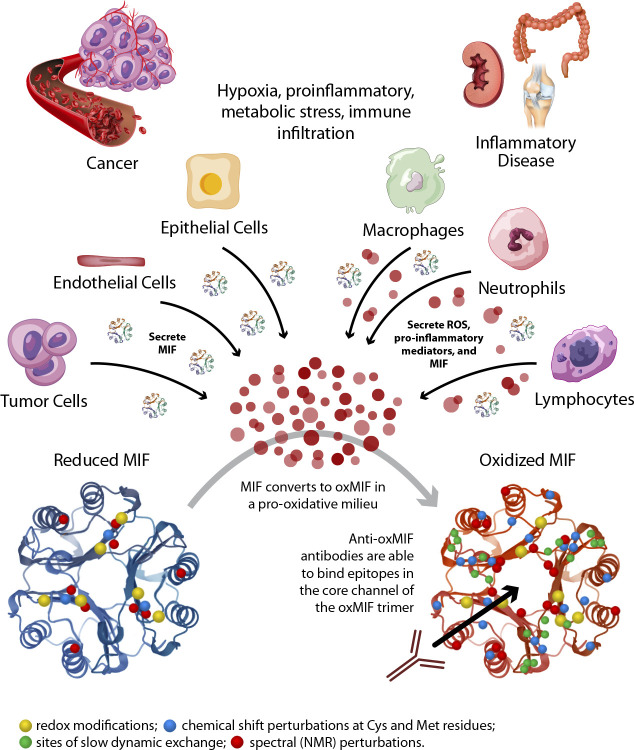Figure 1.
Redox-dependent macrophage migration inhibitory factor (MIF) structure. Hypoxic pro-inflammatory conditions are common in cancer and inflammatory disease microenvironments. Macrophages, neutrophils, and other immune cells contribute to the generation of ROS and pro-inflammatory mediators. Under these oxidizing conditions, MIF, which is secreted by tumor cells, as well as endothelial cells, epithelial cells, and other immune cells, can convert to oxMIF. oxMIF has increased redox modifications (yellow dots) and chemical shift perturbations at Cys and Met residues (blue dots), more sites of slow dynamic exchange (green dots), and more spectral (NMR) perturbations (red dots) compared with redMIF. Once in the oxMIF isoform, anti-oxMIF antibodies can access and bind to epitopes in the core channel of the trimer. Cys, cysteine; Met, methionine; MIF, macrophage migration inhibitory factor; NMR, nuclear magnetic resonance; oxMIF, oxidized macrophage migration inhibitory factor; ROS, reactive oxygen species.

